
Cakes can be very sensitive to their baking environment and ingredient handling. If cooked improperly, a cake can fall in the middle, fail to rise, burn on the outside, remain gooey on the inside or bubble at the cake surface. Bubbling on top of the cake is just one of many problems that bakers run into when putting a cake recipe together. The cause of the bubbles and the solution to the issue are usually found in the preparation of the batter. Like other common cake problems, once you understand the source of the bubbles on your finished cake, you can find an easy fix.
Making Bubbles
The bubbles in the surface of a finished cake have a few different causes. The bubbles are created by overbeating the batter, failing to let some batters settle before baking and letting others settle for too long before going into the oven. Placing the cake in a cool oven is another cause of bubbling on the surface.
The Chemistry of It All
The bubbles are pockets of air that can't release from the batter before the baking process ends. The air is often introduced into the batter by overbeating. The bubbles can also come from carbon dioxide trapped in the cake from a failed leavening reaction. The leaveners, or rising agents, in cakes are baking powder and baking soda. Double-acting baking powder rises twice, so baking powder-leavened cakes must rest a few moments before baking to allow that first rise to occur. Baking soda-leavened cakes rise once, and this must occur while the cake is baking. Thus, baking soda-leavened cakes must be placed in the oven just as soon as the batter is beaten and poured into a prepared pan to prevent bubbling.
Other Helpful Measures
You can further prevent the batter from bubbling by tapping the sides of the cake pan until all of the bubbles in the unbaked batter pop. This allows the excess air or gas to release before they can be baked into the surface of the cake. If you still end up with bubbles on the cake surface after baking, you can still salvage the cake. Use a long knife to carefully cut the top off the cake just under the bubbles.
A Common Myth
Many people believe that you must beat the eggs used in the cake before incorporating them into the batter. Unless this is called for in the recipe, don't beat the eggs before putting them in the rest of the batter. Doing so only increases your chances of getting a finished cake with bubbles at the surface. The myth originates in the days before leavening agents, when whipped eggs were the way to make a cake rise to a light and fluffy dessert. Today, we have baking soda and baking powder, two leaveners that do the job without all the excess beating.
Related Articles

Can I Save a Cake if I Added Too Much ...
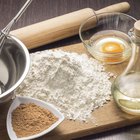
How to Stop Cakes From Dropping
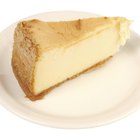
Why Does My Cheesecake Crack?
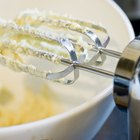
Does Baking Soda Affect the Height of a ...

Does Baking Dough Kill Bacteria?

How to Make a Cake Board
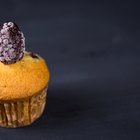
What Causes Cupcakes to Fall?
What Causes My Cake to Fall When ...

What Happens When I Put in Too Much ...
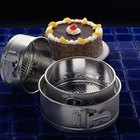
How to Keep Cake Edges From Hardening ...

Difference Between Baking on the Top & ...

Does Seven-Minute Frosting Need to Be ...
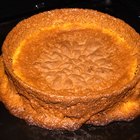
Reasons for Cakes Not to Rise

How Long After You Bake Should You Put ...

What Happens When You Forget to Put ...

Does Yeast Cause Holes in Bread?

What if You Forget to Put Eggs Into ...
The Best Homemade German Chocolate Cake ...

What Prevents Mold in Fruit Cakes?
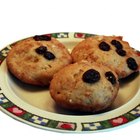
Roshco Silicone Bakeware Instructions
References
Writer Bio
Jonita Davis is freelance writer and marketing consultant. Her work has appeared in various print and online publications, including "The LaPorte County Herald Argus" and Work.com. Davis also authored the book, "Michigan City Marinas," which covers the history of the Michigan City Port Authority. Davis holds a bachelor's degree in English from Purdue University.
Photo Credits
Michael Blann/Digital Vision/Getty Images